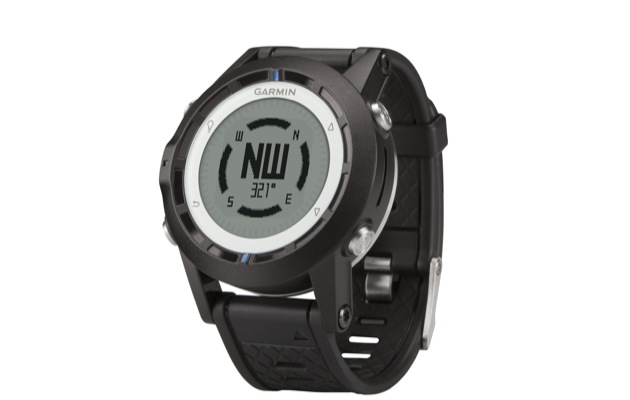Who’s it for? All sailors wanting GPS, tide and time info – plus a useful training tool for sportsboat/dinghy racers. Tested by Matthew Sheahan
Garmin Quatix watch
Apart from telling the time, one of the most useful functions on the ground-breaking Garmin Quatix sailing watch is the tidal data, which allows you to find HW and LW times for pretty much anywhere.
I’m conscious that you might have expected some of the many advanced functions – some of which I’m yet to discover – such as the start line proximity, navigation, streaming NMEA data to your wrist and controlling your autopilot to be the most appealing features of this watch.
The trouble is that some of these sophisticated functions are not as easy to use as you might hope. Being a watch, the screen is small and being on your wrist means you’re looking down when you should be looking up and out of the boat.
Looking for the best Prime Day Garmin deals? Check out our essential guide
You also need to be quite proficient at operating the watch. Learning the functions in the heat of the moment is impractical. To get the best out of it you really have to practise.
What surprised and impressed me this racing season, though, was how useful the watch is in assessing your performance after racing. When used with Garmin’s Base Camp software, the data logging facility is excellent and allows you to go back and analyse your track second by second.
For performance boats with asymmetric spinnakers – particularly sportsboats and dinghies where there is little or no instrumentation – this helps you solve the high-and-fast v low-and-slow conundrum by plotting your VMG on the screen. This is especially useful when training alone as you start to build a picture of your performance with each run.
I was also impressed by the battery life on one charge – the watch is charged using a USB cradle – even when the GPS is left on. This is a big step forward given other failed attempts over the years.
Verdict
Overall, this is a technically advanced wrist GPS with a long list of very sophisticated features with the added benefit of telling the time. It’s a device that is by nature very portable and is as applicable aboard an IRC racer as it is a racing dinghy. But there is a catch. Not all classes allow the use of electronic instruments and, therefore, simply wearing one could land you in the protest room quicker than you expected.




